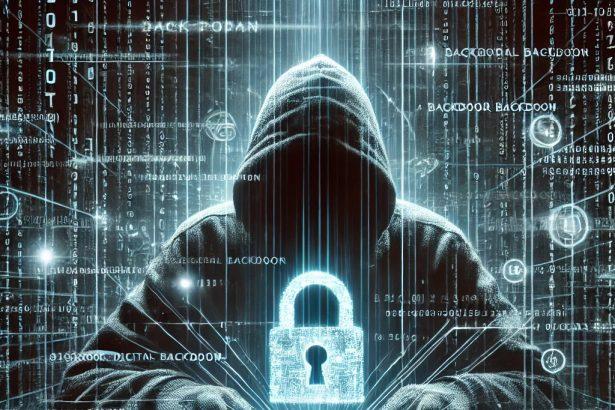Plague is a highly evasive Linux backdoor disguised as a malicious PAM (Pluggable Authentication Module). It allows threat actors to silently bypass authentication and gain persistent SSH access to compromised systems. Operating undetected for over a year, it survived system updates and left nearly no forensic traces.
Threat Overview
| Property | Details |
|---|---|
| Threat type | PAM‑based Linux backdoor |
| Detection names | Initially none; over 30 antivirus engines now detect it |
| Symptoms of infection | Unexpected SSH access, unusual PAM modules, missing authentication logs |
| Damage / Distribution | Credentials theft, lateral movement, persistence via static credentials embedded in PAM modules, deployed via disguised library filenames (e.g. libselinux.so.8) |
| Danger level | Critical for Linux servers, especially bastion hosts/jump servers/cloud infrastructure |
| Removal tool | SpyHunter |
In‑Depth Analysis
How I Got Infected
Plague typically masquerades as a legitimate PAM module, often using names like libselinux.so.8 or libse.so to evade suspicion. There’s no clear infection vector yet, but it appears to be deployed in targeted attacks rather than broad spam or exploit campaigns.
What Does It Do
Once installed, Plague hooks into the PAM authentication stack and allows access using hardcoded static credentials. It sanitizes the runtime environment by unsetting variables like SSH_CONNECTION, SSH_CLIENT, and redirects shell history (HISTFILE) to /dev/null, effectively erasing traces of SSH sessions. It also employs layered string obfuscation, anti‑debugging, and hides itself under a trusted library name.
Should You Be Worried
Absolutely. Plague is a highly sophisticated and persistent threat especially dangerous for Linux infrastructure. Its ability to bypass authentication and evade detection makes it ideal for stealthy credential theft and lateral movement across networks. Standard antivirus solutions failed to detect it until recently, so administrators must assume it could infiltrate unnoticed on unmonitored systems.
Manual Removal of Backdoor Malware (For Advanced Users Only)
Step 1: Boot Into Safe Mode with Networking
- Restart your computer and enter Safe Mode:
- Windows 10/11:
- Press Windows + R, type msconfig, and press Enter.
- Navigate to the Boot tab, check Safe boot, and select Network.
- Click Apply and OK, then restart your PC.
- Alternative Method:
- Hold Shift while clicking Restart from the Start menu.
- Select Troubleshoot > Advanced options > Startup Settings.
- Click Restart, then select Enable Safe Mode with Networking.
- Windows 10/11:
Step 2: End Malicious Processes Using Task Manager
- Press Ctrl + Shift + Esc to open Task Manager.
- Look for suspicious or unfamiliar processes consuming high CPU or RAM.
- Right-click on the process and select Open file location.
- If the file is in an unusual directory (e.g.,
C:\Users\PublicorC:\Windows\System32), it might be malware. - End the process by right-clicking and selecting End Task.
- Delete the related file from its folder.
Step 3: Delete Backdoor Files from System Folders
- Open File Explorer and navigate to:makefileCopyEdit
C:\Users\YourUsername\AppData\Local C:\Users\YourUsername\AppData\Roaming C:\ProgramData C:\Windows\Temp - Delete any suspicious folders or files with random names (e.g.,
xhterou.exe,srvhosts.dll,temp0987.bat). - Clear the Temp folder:
- Press Windows + R, type %temp%, and press Enter.
- Select all files (Ctrl + A) and delete them.
Step 4: Remove Malicious Registry Entries
⚠️ Warning: Modifying the registry incorrectly can damage your system. Proceed with caution.
- Press Windows + R, type regedit, and press Enter.
- Navigate to the following keys and look for suspicious values:mathematicaCopyEdit
HKEY_LOCAL_MACHINE\Software\Microsoft\Windows\CurrentVersion\Run HKEY_CURRENT_USER\Software\Microsoft\Windows\CurrentVersion\Run - Delete unknown registry entries referencing suspicious
.exefiles. - Close Registry Editor and restart your PC.
Step 5: Remove Suspicious Startup Programs
- Open Task Manager (Ctrl + Shift + Esc) and go to the Startup tab.
- Look for unknown or suspicious programs and disable them.
Step 6: Reset Network Settings (Optional)
- Open Command Prompt as Administrator:
- Press Windows + S, type cmd, and select Run as administrator.
- Run the following commands:perlCopyEdit
netsh winsock reset netsh int ip reset ipconfig /flushdns - Restart your computer.
Automated Removal Using SpyHunter
If manually removing the backdoor malware is too complex or if you want a faster, more effective solution, use SpyHunter, a powerful anti-malware tool that specializes in detecting and removing backdoors and other threats.
Step 1: Download and Install SpyHunter
- Visit the official SpyHunter download page: 👉 Download SpyHunter
- Click Download and follow the on-screen installation instructions.
Step 2: Run a Full System Scan
- Launch SpyHunter.
- Click on Start Scan Now to initiate a full system scan.
- Wait for the scan to complete. SpyHunter will detect and list all malware threats, including backdoor infections.
Step 3: Remove Detected Threats
- Review the scan results.
- Click Fix Threats to remove all detected malware.
- Follow on-screen prompts to restart your computer if necessary.
Step 4: Enable SpyHunter’s Real-Time Protection
- Open SpyHunter and go to Settings > Malware Protection.
- Enable Real-Time Malware Protection to prevent future infections.
How to Prevent Future Backdoor Infections
- Use a reputable anti-malware tool like SpyHunter for real-time protection.
- Keep your software and operating system updated to patch vulnerabilities.
- Avoid downloading cracked software or opening suspicious email attachments.
- Enable firewall and network security settings to prevent unauthorized access.
- Use strong passwords and enable two-factor authentication (2FA) where possible.
Conclusion
Plague is one of the most insidious Linux threats in recent memory. By embedding itself deeply in the PAM authentication system and using advanced stealth techniques, it evades detection while enabling persistent, unauthorized SSH access and credential theft. If you manage any Linux servers—especially high‑value targets like bastion hosts or cloud servers—you must inspect PAM modules for anomalies, monitor authentication logs, and consider behavioral detection tools. To mitigate risk, run a full system check with SpyHunter immediately to detect and remove potential Plague modules.




